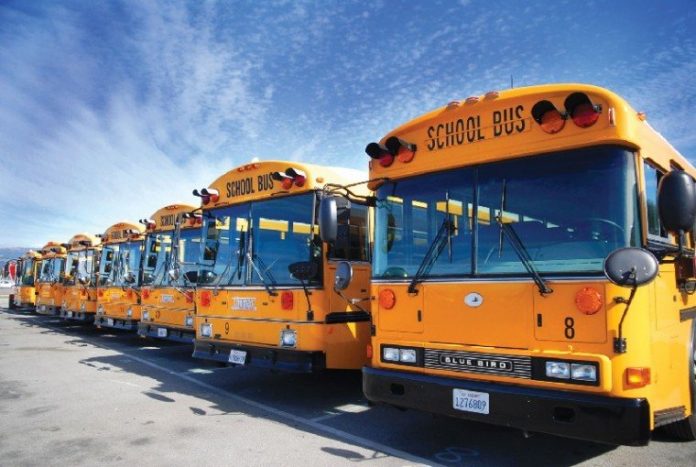The school district’s attempts to decrease transportation costs
by designating specific
”
walking
”
schools have been thwarted by rising gas prices. The district
budgets $3 per gallon of diesel but now pays between $3.10 and
$3.20 per gallon to fuel its busses, said the district’s
transportation supervisor, Darren Salo.
GILROY
The school district’s attempts to decrease transportation costs by designating specific “walking” schools have been thwarted by rising gas prices. The district budgets $3 per gallon of diesel but now pays between $3.10 and $3.20 per gallon to fuel its busses, said the district’s transportation supervisor, Darren Salo.
Although the district reduced costs by eliminating eight buses when it stopped busing students to magnet schools four years ago, it has since added six back to the fleet because of Gilroy’s attendance growth. The district has added more than 500 students during the past four years and budgets $1.8 million for the 2007-2008 school year’s cost of transportation.
The school district switched from magnet to neighborhood schools in 2003 in an effort to strengthen community bonds and cut back on transportation costs. Now students attend the campus closest to where they live.
Students enrolled in any of the district’s four so-called walking schools reside within a mile of their school and are not provided with district transportation. The district hoped this would encourage students to walk the short distance to school. Instead, more and more parents are compensating for the lack of school busses by driving their children to school, clogging neighborhood streets. This is not what the district had in mind, Salo said.
“Traffic has gotten worse,” Salo said. “Now parents are driving their kids the three or four blocks to school.” Ideally, students at walking schools would be walking and students provided with district transportation would be taking advantage of it, Salo said. In reality, many students are getting rides from their parents.
Tori Koppelmaa, the mother of a student at Ascencion Solorsano Middle School and three students at Glen View Elementary, one of the four walking schools, said her 11-year-old at Solorsano rides the bus and then walks the two blocks from the bus stop. But she picks up her 8-year-old twins and 6-year-old at Glen View and drives them the five blocks home.
“There seems to be a lot of walkers,” Koppelmaa said of Glen View’s students. But she picks up her children because there is no crossing guard at 10th Street and because “there’s too many cuckoos,” she said. “I just don’t feel good about it.”
Glen View crossing guard, Arnold Cesena, patrols the corner of Eighth and Princevalle streets every day, come rain or shine. Although he helps many students cross the intersection, he estimated that about 80 percent of Glen View’s 600 students ride to and from school with their parents, whether they use the designated drop off/pick up areas or not.
Every student attending Rucker School and Solorsano is provided with district transportation but Salo reported a mere 50 percent ridership on buses serving those students. Given that students enrolled in these schools live too far away to walk to school, the 50 percent not riding the bus are arriving by car, causing the traffic and safety issues many parents at Solorsano have voiced concern about.
“Very few students walk,” Solorsano principal, Sal Tomasello, said. “Maybe three of four from Eagle Ridge.” Tomasello confirmed that only about half his students ride the bus. The other half get rides from their parents.
If more students took advantage of the district’s buses and the others walked, we would see “reduced congestion and smog and increased safety,” Salo said.













